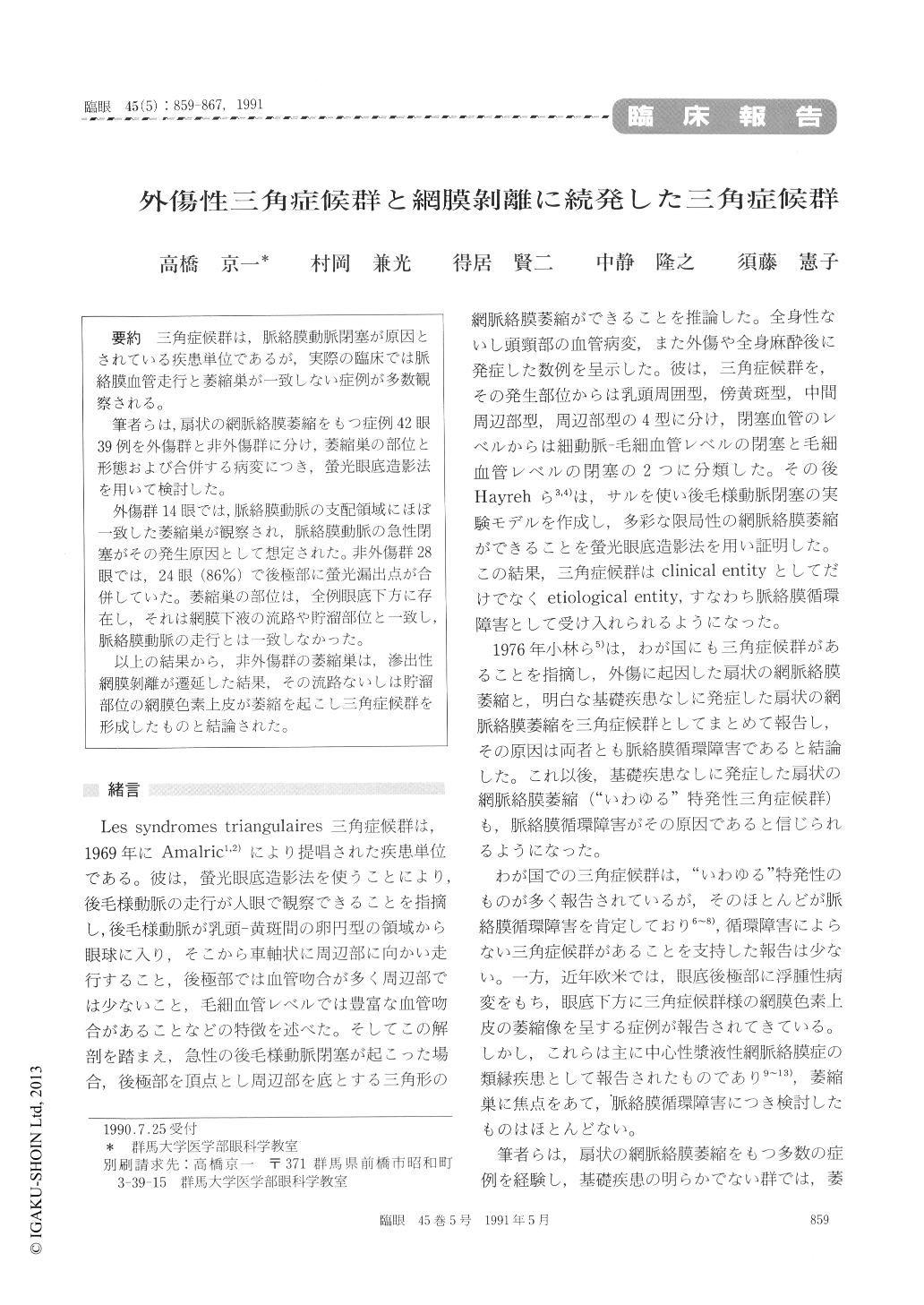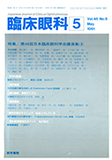Japanese
English
- 有料閲覧
- Abstract 文献概要
- 1ページ目 Look Inside
三角症候群は,脈絡膜動脈閉塞が原因とされている疾患単位であるが,実際の臨床では脈絡膜血管走行と萎縮巣が一致しない症例が多数観察される。
筆者らは,扇状の網脈絡膜萎縮をもつ症例42眼39例を外傷群と非外傷群に分け,萎縮巣の部位と形態および合併する病変につき,螢光眼底造影法を用いて検討した。
外傷群14眼では,脈絡膜動脈の支配領域にほぼ一致した萎縮巣が観察され,脈絡膜動脈の急性閉塞がその発生原因として想定された。非外傷群28眼では,24眼(86%)で後極部に螢光漏出点が合併していた。萎縮巣の部位は,全例眼底下方に存在し,それは網膜下液の流路や貯溜部位と一致し,脈絡膜動脈の走行とは一致しなかった。
以上の結果から,非外傷群の萎縮巣は,滲出性網膜剥離が遷延した結果,その流路ないしは貯溜部位の網膜色素上皮が萎縮を起こし三角症候群を形成したものと結論された。
We evaluated 42 eyes, 39 cases, which manifested triangle-shaped choroidal alterations by fluorescein angiography. The series included 14 eyes, 14 cases, with a history of blunt ocular trauma. No distinct etiological factors could be identified in the remain-ing 28 eyes, 25 cases.
In posttraumatic group, the triangular retino-choroidal atrophy was present radiating from the posterior fundus towards the periphery. Its distribu-tion simulated the choroidal arterial pattern.
In idiopathic group, the retinochoroidal atrophy was invariably directed towards the inferior periph-ery. Its size and shape was variable. Occasionally, the atrophic area involved the whole inferior hemi-sphere of the fundus. Its distribution was indepen-dent of the choroidal vascular pattern. Fluorescein angiography showed leakage of dye in the posterior fundus in 25 eyes, 86%. These findings seemed to indicate that the triangular retinochoroidal atrophy was due to persistent secondary retinal detachment.
It is concluded that there are two basic types of so-called triangular syndrome. It may result from blunt ocular trauma and assume a classic fundus appearance. It may also develop consequent to retinal detachment of exudative nature.

Copyright © 1991, Igaku-Shoin Ltd. All rights reserved.


